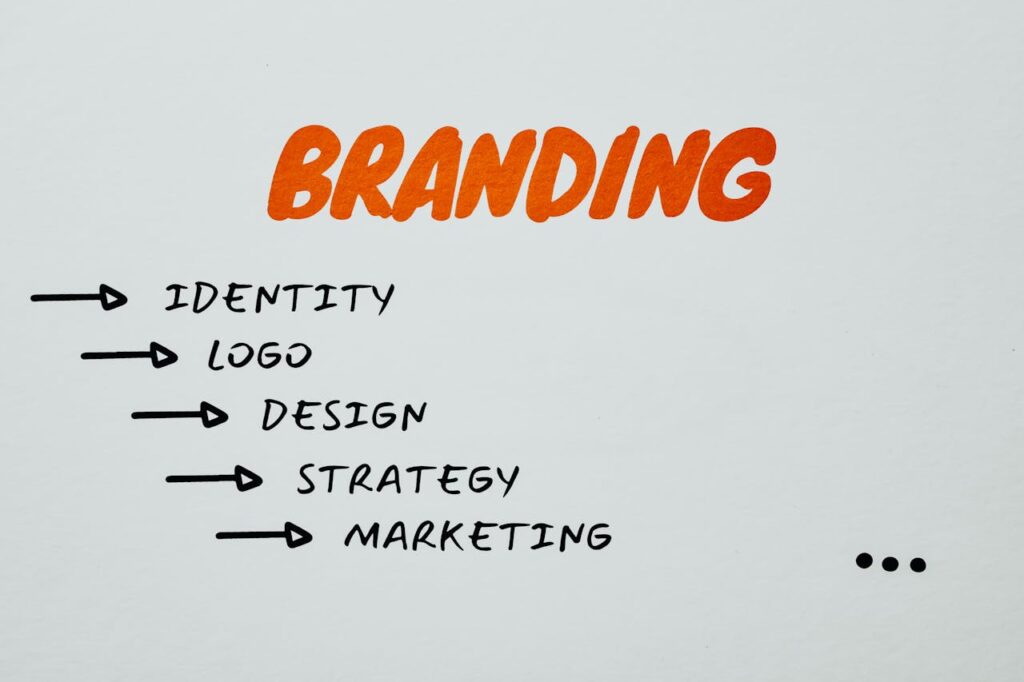Navigating government procurement processes can be challenging for marketing agencies and consultants. The Alberta government, like other public sector entities, follows specific procedures when purchasing marketing and communication services. This comprehensive guide demystifies the Alberta government procurement process, providing marketing professionals with the knowledge and strategies needed to successfully compete for and win government contracts.
The Alberta Government Procurement Landscape
Overview of Public Sector Procurement in Alberta
The Alberta government spends billions of dollars annually on goods and services from external vendors. Marketing services—including advertising, design, digital marketing, branding, and communications—represent a significant portion of this spending. Understanding the procurement landscape is the first step toward successfully navigating it.
Key Procurement Entities
Several entities manage procurement within Alberta’s public sector:
Service Alberta: Oversees procurement policy and provides centralized purchasing services for government ministries. The Procurement Services division within Service Alberta manages many large-scale contracts.
Alberta Public Service Commission: Establishes policies for procurement of professional services, including marketing and communications.
Individual Ministries: Departments like Economic Development, Tourism, Health, and others often manage their own marketing procurement for specialized needs.
Alberta Purchasing Connection (APC): The official online portal where government opportunities are posted and managed.
Public Agency Procurement: Crown corporations, educational institutions, healthcare organizations, and municipalities often have their own procurement processes while following provincial frameworks.
Procurement Values and Principles
Alberta government procurement is guided by several core principles:
Transparency: Procurement processes must be open and clearly communicated to ensure fair competition.
Value for Money: Decisions consider not just cost but overall value, including quality, expertise, and alignment with objectives.
Fair Treatment: All qualified vendors must have equal opportunity to compete for government business.
Accountability: Procurement decisions must be defensible and documented.
Innovation: Increasingly, procurement processes aim to encourage innovative approaches and solutions.
Types of Marketing Services Procured
The Alberta government procures a wide range of marketing and communication services:
Strategic Communications: Planning, message development, and campaign strategy.
Creative Services: Graphic design, copywriting, video production, and brand development.
Digital Marketing: Website development, social media management, SEO/SEM, and content marketing.
Media Planning and Buying: Traditional and digital media purchasing and campaign management.
Public Relations: Media relations, stakeholder engagement, and crisis communications.
Market Research: Audience analysis, public opinion research, and campaign effectiveness measurement.
Event Management: Planning and execution of government events, conferences, and public engagements.
Procurement Methods for Marketing Services
The Alberta government uses several methods to procure marketing services, each with distinct processes and requirements:
1. Request for Proposals (RFP)
RFPs are the most common procurement method for complex marketing services or larger contracts.
Key Characteristics
Formal Process: RFPs follow a structured process with specific submission requirements and evaluation criteria.
Detailed Scope: They typically include comprehensive information about project objectives, deliverables, and timelines.
Competitive Evaluation: Proposals are evaluated based on predetermined criteria, often with a scoring system that balances technical merit and price.
Contract Award: Results in a formal contract with the successful proponent.
Typical RFP Structure
Alberta government RFPs for marketing services typically include:
- Introduction and Background: Overview of the issuing department and context for the procurement.
- Scope of Work: Detailed description of required services, deliverables, and performance expectations.
- Submission Requirements: Instructions for proposal format, content, and submission procedures.
- Evaluation Criteria: Explanation of how proposals will be assessed, often with weighted scoring categories.
- Terms and Conditions: Legal and contractual requirements, including insurance, confidentiality, and intellectual property provisions.
- Pricing Format: Instructions for how to present cost information, often in a separate sealed envelope or file.
- Timelines: Key dates for the procurement process, including submission deadline and anticipated award date.
2. Request for Qualifications (RFQ)
RFQs are often used to prequalify vendors for marketing services, especially when establishing standing offers or vendor rosters.
Key Characteristics
Qualification Focus: Emphasis on vendor capabilities, experience, and expertise rather than specific project proposals.
Two-Stage Process: Often used as the first stage before inviting qualified vendors to respond to specific project RFPs.
Roster Creation: Frequently results in a pre-qualified vendor list that can be drawn upon for future projects.
Common RFQ Requirements
Alberta government RFQs for marketing services typically request:
- Company Profile: History, size, structure, and financial stability.
- Team Qualifications: Staff expertise, certifications, and experience.
- Relevant Experience: Similar projects completed for government or comparable clients.
- Case Studies: Detailed examples of past work demonstrating capabilities.
- Client References: Contacts who can verify performance on previous projects.
- Approach and Methodology: General description of how the vendor approaches marketing projects.
3. Standing Offers and Supply Arrangements
The Alberta government often establishes standing offers or supply arrangements for ongoing marketing needs.
Key Characteristics
Pre-Qualified Vendors: Selected through an initial competitive process.
Streamlined Procurement: Allows departments to access services without conducting a full procurement each time.
Task Authorization: Individual projects are typically assigned through task authorizations or statements of work.
Term Contracts: Usually established for multi-year periods (e.g., 3-5 years).
Common Categories
Standing offers for marketing services are often divided into categories such as:
- Advertising and Creative Services
- Digital Marketing and Social Media
- Public Relations and Communications
- Market Research and Analytics
- Event Planning and Management
4. Direct Awards and Limited Competitions
In certain circumstances, marketing services may be procured through direct awards or limited competitions.
Circumstances Permitting Direct Awards
- Emergency situations requiring immediate communication response
- Specialized expertise available from only one or few vendors
- Low-value contracts below competitive thresholds (typically under $10,000)
- Follow-on work that logically extends a previous contract
Limited Competition Process
- Invitation to a small number of pre-qualified vendors (typically 3-5)
- Streamlined proposal requirements
- Expedited evaluation and award process
- Often used for time-sensitive projects
The Procurement Process: Step by Step
1. Opportunity Identification
Where to Find Alberta Government Opportunities
Alberta Purchasing Connection (APC): The primary source for government procurement opportunities (https://vendor.purchasingconnection.ca).
Agency Websites: Some agencies post opportunities on their own websites.
Vendor Registration: Registering with the APC allows you to receive notifications of relevant opportunities.
Industry Events: Government representatives often discuss upcoming needs at industry conferences and networking events.
Prior Information Notices: Sometimes posted to alert vendors of upcoming major procurements.
Opportunity Assessment
Before deciding to pursue an opportunity, assess:
- Alignment with your firm’s capabilities and experience
- Competitive positioning and likelihood of success
- Resource availability to prepare a quality proposal
- Potential contract value and profitability
- Strategic value beyond immediate revenue (e.g., portfolio building, relationship development)
2. Pre-Proposal Activities
Information Sessions
The Alberta government often holds information sessions for significant marketing procurements:
- Typically announced in the RFP document
- May be mandatory or optional
- Provides opportunity to ask questions and clarify requirements
- Offers insights into government priorities and expectations
Questions and Clarifications
The formal process for submitting questions:
- Questions must be submitted in writing by the deadline specified in the RFP
- All questions and answers are shared with all proponents
- Avoid questions that reveal your competitive strategy
- Focus on clarifying ambiguities or inconsistencies in the requirements
Relationship Building (Within Ethical Boundaries)
Ethical approaches to relationship building:
- Attend government-sponsored industry events
- Participate in public consultations
- Join industry associations where government representatives participate
- Offer educational content and thought leadership
- Maintain relationships outside active procurement periods
3. Proposal Development
Understanding Evaluation Criteria
Alberta government RFPs typically evaluate marketing proposals based on:
Technical Merit (60-80%) – Understanding of requirements – Methodology and approach – Team qualifications and experience – Project management approach – Innovation and creativity – Similar project experience
Price (20-40%) – Total cost – Rate structure – Value for money
Additional Factors – Indigenous participation (for some contracts) – Environmental sustainability – Local economic benefits
Proposal Structure and Content
A winning proposal for Alberta government marketing services typically includes:
Executive Summary – Concise overview of your understanding, approach, and value proposition – Alignment with government objectives – Key differentiators
Understanding of Requirements – Demonstration of comprehension of the government’s needs – Insights into the specific challenges or opportunities – Relevant context and research
Methodology and Approach – Detailed description of your marketing approach – Project phases and activities – Creative process and quality assurance – Stakeholder engagement approach
Team Structure – Organization chart for the project team – Key personnel qualifications and relevant experience – Roles and responsibilities – Resource allocation and availability
Project Management – Schedule and timeline – Deliverables and milestones – Communication and reporting processes – Risk management approach
Case Studies and Experience – Relevant projects for government or similar clients – Results and outcomes achieved – Lessons learned and application to current opportunity
Pricing – Detailed breakdown according to RFP requirements – Hourly rates and estimated hours – Expenses and disbursements – Value-added elements
Common Proposal Mistakes
Avoid these common errors when bidding on Alberta government marketing contracts:
- Failing to follow submission instructions exactly
- Not addressing all evaluation criteria explicitly
- Submitting generic proposals without customization
- Overemphasizing creative elements at the expense of process and methodology
- Inadequate demonstration of government experience or understanding
- Unrealistic pricing (either too high or unsustainably low)
- Poor quality control (errors, inconsistencies, formatting issues)
4. Proposal Submission
Submission Requirements
Alberta government RFPs typically have strict submission requirements:
Format – Electronic submission through APC portal – Specific file formats (usually PDF) – Maximum file sizes – Required forms and attachments
Deadline – Strict submission deadlines (to the minute) – No extensions except in exceptional circumstances – System closes automatically at deadline
Completeness – All required documents and forms – Signed where required – Properly labeled files – Separate technical and financial submissions when required
Submission Best Practices
- Submit well before the deadline to avoid technical issues
- Use the APC’s test submission feature if available
- Have a backup submission plan
- Confirm receipt if the system provides confirmation
- Keep copies of all submitted materials
5. Evaluation and Award
Evaluation Process
The Alberta government typically follows this evaluation process for marketing proposals:
- Compliance Review: Ensuring all required elements are present and properly formatted.
- Technical Evaluation: Assessment of the proposal against the technical criteria by an evaluation committee.
- Financial Evaluation: Review of pricing proposals, often only for those that meet a minimum technical score.
- Combined Scoring: Calculation of final scores based on the weighted technical and financial evaluations.
- Due Diligence: Reference checks, possible presentations or interviews for shortlisted vendors.
- Award Decision: Selection of the highest-scoring compliant proposal.
Post-Award Debriefing
After contract award, unsuccessful proponents can request a debriefing:
- Provides insights into proposal strengths and weaknesses
- Explains how evaluation criteria were applied
- Offers valuable feedback for future proposals
- Must be requested within specified timeframe (typically 15-30 days)
Specialized Procurement Considerations
Indigenous Procurement Opportunities
The Alberta government has initiatives to increase Indigenous participation in procurement:
Indigenous Business Participation – Some RFPs include evaluation criteria for Indigenous participation – Points awarded for Indigenous ownership or partnerships – Requirements for Indigenous subcontracting or employment
Indigenous Procurement Program – Set-asides for Indigenous-owned businesses – Capacity-building initiatives – Mentorship and training opportunities
Social Procurement Initiatives
Alberta is increasingly incorporating social value considerations into procurement:
Community Benefits – Employment opportunities for underrepresented groups – Skills development and training – Local economic development
Environmental Sustainability – Carbon footprint reduction – Sustainable materials and practices – Environmental certifications
Cooperative Procurement
Marketing firms should be aware of cooperative procurement opportunities:
Regional Cooperation – Joint procurements between provincial and municipal governments – Shared service agreements – Regional marketing initiatives
Cross-Governmental Initiatives – Tourism and economic development collaborations – Health promotion campaigns – Public awareness initiatives
Strategies for Success in Alberta Government Marketing Procurement
1. Develop Government-Specific Capabilities
Invest in developing expertise and capabilities specifically relevant to government marketing:
Public Sector Marketing Knowledge – Understanding of government communication objectives – Familiarity with public sector approval processes – Experience with government brand guidelines – Knowledge of public sector advertising regulations
Compliance Infrastructure – Quality management systems – Security clearance processes – Privacy and data protection protocols – Accessibility compliance expertise
Government-Specific Case Studies – Document success stories with measurable outcomes – Collect testimonials from government clients – Develop case studies addressing common government challenges
2. Build Strategic Relationships
Develop relationships within the government ecosystem:
Industry Associations – Join marketing and communication associations that engage with government – Participate in government-industry forums – Attend public sector marketing conferences
Thought Leadership – Publish insights on public sector marketing trends – Speak at government-focused events – Offer educational workshops for public servants
Networking Strategy – Identify key decision-makers and influencers – Engage through appropriate professional channels – Provide value through information and insights
3. Master the Procurement Process
Invest in developing procurement expertise:
Dedicated Resources – Assign staff specifically to government proposal development – Consider hiring team members with government procurement experience – Develop internal proposal development processes
Continuous Improvement – Maintain a database of previous proposals and feedback – Analyze successful and unsuccessful bids – Refine approach based on debriefing insights
Compliance Focus – Create proposal templates aligned with government requirements – Develop checklists for common submission requirements – Implement rigorous quality control processes
4. Leverage Partnerships and Teaming
Consider strategic partnerships to enhance competitiveness:
Complementary Capabilities – Partner with firms offering complementary services – Form teams with specialized expertise for specific opportunities – Consider joint ventures for larger contracts
Prime-Sub Relationships – Position as either prime contractor or subcontractor based on strengths – Develop reliable network of specialized subcontractors – Build relationships with established government contractors
Indigenous Partnerships – Develop meaningful partnerships with Indigenous-owned firms – Ensure partnerships provide genuine value to Indigenous partners – Invest in long-term relationship building
Case Study: Successful Marketing Procurement in Alberta
Background
A mid-sized marketing agency successfully competed for a major Alberta government campaign focused on promoting economic diversification initiatives.
Approach
Pre-Proposal Preparation – Attended information session and asked strategic questions – Researched previous economic development campaigns – Reviewed government economic strategy documents – Assembled team with relevant industry expertise
Proposal Development – Created custom response addressing all evaluation criteria – Developed innovative approach combining traditional and digital channels – Included detailed measurement framework aligned with government objectives – Assembled case studies demonstrating similar successful campaigns
Differentiating Factors – Included research-based audience insights specific to Alberta industries – Proposed phased implementation with clear milestones and decision points – Incorporated stakeholder engagement strategy – Demonstrated understanding of government approval processes
Results
- Won competitive procurement against larger agencies
- Successfully delivered campaign exceeding engagement targets
- Received positive client feedback on process and outcomes
- Leveraged success to win additional government contracts
Future Trends in Alberta Government Marketing Procurement
Digital Transformation
The procurement of marketing services is evolving with digital transformation:
Digital-First Campaigns – Increased emphasis on digital channels and content – Data-driven campaign development and optimization – Integration with digital service delivery
Agile Procurement Methods – Shorter procurement cycles – Iterative project development – Sprint-based deliverables and payment structures
Value-Based Procurement
Focus shifting from lowest cost to best value:
Outcomes-Based Contracts – Payment tied to achieving specific marketing outcomes – Performance incentives and metrics – Shared risk/reward structures
Quality-Price Ratio – Increased weighting for technical quality – Sophisticated value-for-money assessments – Total cost of ownership considerations
Collaborative Models
New models emphasizing collaboration between government and vendors:
Co-Creation Approaches – Joint development of marketing strategies – Collaborative creative processes – Shared resources and expertise
Innovation Partnerships – Procurement focused on solving complex communication challenges – Emphasis on innovative approaches – Longer-term strategic relationships
Conclusion
Successfully navigating the Alberta government procurement process for marketing services requires a combination of strategic preparation, process expertise, and demonstrated capabilities. By understanding the procurement landscape, mastering the proposal development process, and implementing targeted strategies, marketing agencies and consultants can effectively compete for and win valuable government contracts.
The Alberta government represents a significant opportunity for marketing service providers who are willing to invest in understanding the unique requirements and processes of public sector procurement. While the process may seem complex initially, the potential for stable, meaningful work that impacts Albertans makes it a worthwhile pursuit for qualified marketing professionals.
Alberta Government Procurement Guide Checklist
Use this checklist to prepare for Alberta government marketing procurement opportunities:
Preparation
- ☐ Register on Alberta Purchasing Connection
- ☐ Set up notification alerts for relevant categories
- ☐ Research government marketing priorities and initiatives
- ☐ Develop government-specific capabilities and case studies
- ☐ Prepare standard materials (company profile, team bios, etc.)
Opportunity Assessment
- ☐ Evaluate alignment with capabilities and experience
- ☐ Assess competitive positioning
- ☐ Calculate resource requirements for proposal development
- ☐ Determine strategic value beyond immediate revenue
- ☐ Make go/no-go decision based on objective criteria
Proposal Development
- ☐ Attend information sessions
- ☐ Submit clarification questions by deadline
- ☐ Create proposal development schedule with internal deadlines
- ☐ Assign team responsibilities for proposal sections
- ☐ Develop response addressing all evaluation criteria
- ☐ Conduct internal review against RFP requirements
- ☐ Prepare pricing according to required format
- ☐ Implement quality control process
Submission
- ☐ Compile all required documents and attachments
- ☐ Ensure proper formatting and file naming
- ☐ Obtain necessary signatures
- ☐ Submit well before deadline
- ☐ Confirm receipt of submission
Post-Submission
- ☐ Prepare for possible presentations or interviews
- ☐ Ensure reference availability
- ☐ Request debriefing regardless of outcome
- ☐ Document lessons learned for future proposals
By following this guide and checklist, marketing service providers can navigate the Alberta government procurement process with greater confidence and increase their chances of success in this valuable market.



